La scuola, la laurea in
architettura, il lavoro. Questa la strada voluta e percorsa con
grande dedizione e affetto. Ma ce n'era un'altra che, come un fiume
carsico, scorreva dentro di lei. Poi arrivò la libertà, il tempo
per disporre di sé e finalmente percorrere quelle gallerie scavate
dal fiume sotterraneo. E' stato un viaggio pieno di sorprese e
meraviglie quello percorso da Stefania in questi suoi anni recenti,
un viaggio fatto su una barca di colori con i pennelli come remi o le
matite come maschera e pinne.
I primi quadri esposti anni
or sono a Palazzo Trinci avevano infatti la trasparenza dell'acqua e
tinte lacustri. Vi erano immagini di donne che si affacciavano
sorprese alla vita, con occhi stupiti davanti a misteri ancora da
conoscere e da svelare. Donne che, nella successiva mostra di
Spoleto, avevano una nuova sicurezza e fascino. (Qui se ne possono
vedere alcune.) Grandi
cappelli fanno da corona ai loro visi, la sfera della loro coscienza
si espande in quelle ampie aree luminose come in questo "Vestita
di cielo". Richiamano
le aureole dei quadri del
'400, preziose e d'oro che significavano la luce divina. Queste hanno
una luce umana ma che raccoglie il volo delle rondini e dei gabbiani
in spazi sempre più alti.
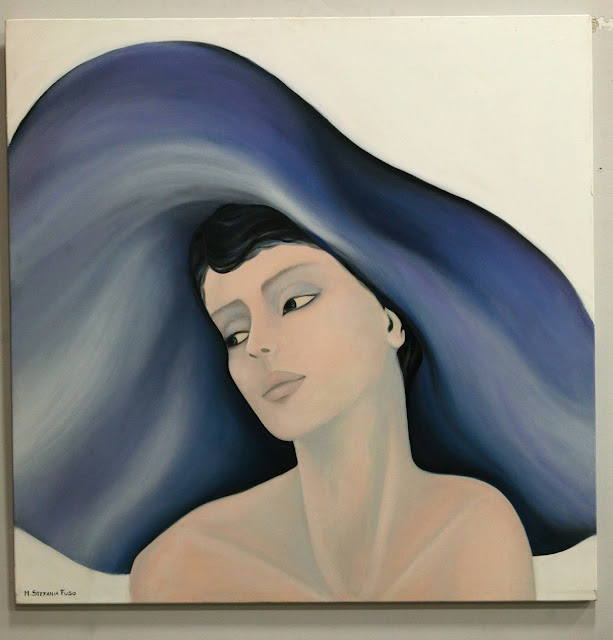 |
Ma
poi Stefania ha ripreso il viaggio nelle grotte dell'anima, perché
più in basso e in profondità voleva cercare le radici dell'esistere
e del sentire. Il prima. Il
punto più antico e profondo cui poter arrivare per esprimerlo.Qui
le parole si sgretolano in suoni non più articolati, quelli di
emozioni inesprimibili se non con colori
e spesso con materiali come
sabbia e più lontani dall'accademia e dai libri. Un quadro ha per
titolo "Big bang"
dove
sembra proprio che materia si espanda senza ordine, e i due quadri
"Magma"
danno il senso di un ribollire di materia incandescente.
Nel
suo "viaggio al centro della terra" la pittrice è giunta
alla camera magmatica e oltre non si può andare, ma Stefania ha
voluto contemplarne l'informe dinamismo e viverlo immergendovisi fino
al limite della resistenza. Ché la pittura per lei è un'avventura
febbrile gioiosa e dolorosa insieme, ma irrinunciabile. Una passione
accettata, come l'etimologia
implica, subita e vissuta come ineluttabile. E il suo cammino ha
preso altre strade ma sempre verso i limiti dell'esperienza. "D'amore
e d'azzurro" come pure
"Tsunami"
e "Mai fermare il vento"
tornano nell'aria a respirare le tempeste dell'alta atmosfera dove
"nullo homo vivente pò scappare".
Ma
vi sono anche momenti di alta contemplazione come "Volino
gli uccelli sopra le acque"
e "Via Lattea"
dove una pace pacata fa sgorgare colori dolci alla vista e l'eternità
dell'oro a chiudere l'orizzonte umano con la percezione del divino.
"Le sorgenti"
e "Il cantico della natura"
hanno la stessa atmosfera serena di appagante contemplazione. Il
verde freschissimo investito dal sole primaverile che ne accende
traparenze d'incanto. Poi però "L'attrazione del
tempo" è un'elegia
delicata dove il velo della nostalgia appanna l'indefinibile colore
del rame vecchio e lo sfrangia senza scampo.
Ma
ruit hora, l'urgenza
della ricerca del senso si somma alla sempre sconvolgente percezione
della finitezza della vita e quadri come "Mai fermare
il vento" e "Senza
argini" sconvolgono la
superficie della tela con fughe di colori e linee e spessori
stravolti che non hanno inizio e fine, ma entrano correndo e correndo
escono dallo spazio definito del quadro. Così pure è drammatico
"L'attesa della pace"
dove la disturbante strisciata di rosso nella fuga degli eventi parla
di sangue e violenza.
Scelgo
"E poi l'azzurro"
per concludere il mio viaggio nella ricerca pittorica di Stefania
Fuso perché qui, negli spessori densi e bui sovrapposti l'uno
all'altro, si scoprono spazi preziosissimi di un blu oltremare che
pone un obiettivo felice in fondo a questa tempestosa avventura. Un
colore che, come l'oro,
veniva pagato a parte ai pittori di soggetti sacri dove però non
poteva mai mancare, perché parla al cuore di futuro e di spazi
spirituali e
di riscatto da condizioni di
buio e sofferenza. Di gioia pura.
Presentazione della mostra all'ex Teatro Piermarini, Foligno, novembre 2018
(video di Alessandro Mastrini)
* * *
The Underground River and the Wonder
Maria Stefania Fuso and her pictorial research
The school, the degree in architecture, the work. This is the road desired and travelled with great dedication and affection. But there was another that, like an underground river, flowed inside her. Then came freedom, time to dispose of herself and finally travel those tunnels dug by the underground river. It has been a journey full of surprises and wonders that Stefania travelled in these recent years, a journey made on a boat of colours with brushes as oars and pencils as a mask and fins.
The first paintings exhibited years ago at Palazzo Trinci had in fact the transparency of water and lake colours. There were images of women who were surprised at life, with eyes astonished before mysteries yet to be known and unveiled. Women who, in the subsequent exhibition in Spoleto, had a new security and charm. (Here you can see some.) Large hats are the crown of their faces, the sphere of their consciousness expands in those large areas of light like this "Dressed in Heaven". They recall the haloes of the 15th century paintings, precious and golden which meant divine light. These have a human light which collects the flight of swallows and seagulls in ever higher spaces.
But then Stefania resumed her journey in the caves of the soul, because deeper and deeper she wanted to look for the roots of existence and of feeling. The most ancient and profound point where you can arrive to express it. Here words crumble into sounds no longer articulated, those of emotions inexpressible if not by colours and often with materials like sand and others more distant from the academy and books. A painting has the title "Big Bang" where it seems that matter expands without order, and the two paintings "Magma" give the sense of the bubbling of incandescent matter.
In her "Journey to the Center of the Earth" the painter has reached the magma chamber and beyond itshe can not go, but Stefania wanted to contemplate its shapeless dynamism and live it immersing herself up to the limit of resistance. Because painting for her is a feverish joyful and painful adventure, but indispensable. An accepted passion, as etymology implies, suffered and lived as ineluctable. And her research has taken other paths but always towards the limits of experience. "Love and Blue" as well as "Tsunami" and "Never Stop the Wind" return to the air to breathe the storms of the upper atmosphere where "nullo homo vivente pò scappare".
But there are also moments of high contemplation like "Let the Birds Fly over the Waters" and "Milky Way" where a quiet peace makes sweet colours flow out of sight and the eternity of gold closes the human horizon with the perception of the divine . "The sources" and "The Song of Nature" have the same serene atmosphere of satisfying contemplation. A fresh green is invested by the spring sun that illuminates enchanting trajectories. Then, however, "The Attraction of Time" is a delicate elegy where a veil of nostalgia tarnishes the indefinable colour of old fraying copper without any escape.
But ruit hora, the urgency of the search for meaning is added to the always shocking perception of the finiteness of life and paintings like "Never Stop the Wind" and "Without Banks" upset the surface of the canvas with escapes of colours and distorted lines that have no beginning or end, but they enter running and running go out of the defined space of the canvas. Likewise, the "Wait for peace" is dramatic, where the disturbing streak of red in the flight of events speaks of blood and violence.
I choose "And Then the Blue" to conclude my journey in the pictorial research of Stefania Fuso because here, in the thick and dark layers superimposed one to the other, you will discover very precious spaces of an ultramarine blue that places a happy goal at the bottom to this stormy adventure. A color that, like gold, was paid separately to the painters of sacred subjects where, however, it could never be lacking, because it speaks to the heart about future and spiritual spaces and redemption from conditions of darkness and suffering. About pure joy.
The first paintings exhibited years ago at Palazzo Trinci had in fact the transparency of water and lake colours. There were images of women who were surprised at life, with eyes astonished before mysteries yet to be known and unveiled. Women who, in the subsequent exhibition in Spoleto, had a new security and charm. (Here you can see some.) Large hats are the crown of their faces, the sphere of their consciousness expands in those large areas of light like this "Dressed in Heaven". They recall the haloes of the 15th century paintings, precious and golden which meant divine light. These have a human light which collects the flight of swallows and seagulls in ever higher spaces.
But then Stefania resumed her journey in the caves of the soul, because deeper and deeper she wanted to look for the roots of existence and of feeling. The most ancient and profound point where you can arrive to express it. Here words crumble into sounds no longer articulated, those of emotions inexpressible if not by colours and often with materials like sand and others more distant from the academy and books. A painting has the title "Big Bang" where it seems that matter expands without order, and the two paintings "Magma" give the sense of the bubbling of incandescent matter.
In her "Journey to the Center of the Earth" the painter has reached the magma chamber and beyond itshe can not go, but Stefania wanted to contemplate its shapeless dynamism and live it immersing herself up to the limit of resistance. Because painting for her is a feverish joyful and painful adventure, but indispensable. An accepted passion, as etymology implies, suffered and lived as ineluctable. And her research has taken other paths but always towards the limits of experience. "Love and Blue" as well as "Tsunami" and "Never Stop the Wind" return to the air to breathe the storms of the upper atmosphere where "nullo homo vivente pò scappare".
But there are also moments of high contemplation like "Let the Birds Fly over the Waters" and "Milky Way" where a quiet peace makes sweet colours flow out of sight and the eternity of gold closes the human horizon with the perception of the divine . "The sources" and "The Song of Nature" have the same serene atmosphere of satisfying contemplation. A fresh green is invested by the spring sun that illuminates enchanting trajectories. Then, however, "The Attraction of Time" is a delicate elegy where a veil of nostalgia tarnishes the indefinable colour of old fraying copper without any escape.
But ruit hora, the urgency of the search for meaning is added to the always shocking perception of the finiteness of life and paintings like "Never Stop the Wind" and "Without Banks" upset the surface of the canvas with escapes of colours and distorted lines that have no beginning or end, but they enter running and running go out of the defined space of the canvas. Likewise, the "Wait for peace" is dramatic, where the disturbing streak of red in the flight of events speaks of blood and violence.
I choose "And Then the Blue" to conclude my journey in the pictorial research of Stefania Fuso because here, in the thick and dark layers superimposed one to the other, you will discover very precious spaces of an ultramarine blue that places a happy goal at the bottom to this stormy adventure. A color that, like gold, was paid separately to the painters of sacred subjects where, however, it could never be lacking, because it speaks to the heart about future and spiritual spaces and redemption from conditions of darkness and suffering. About pure joy.

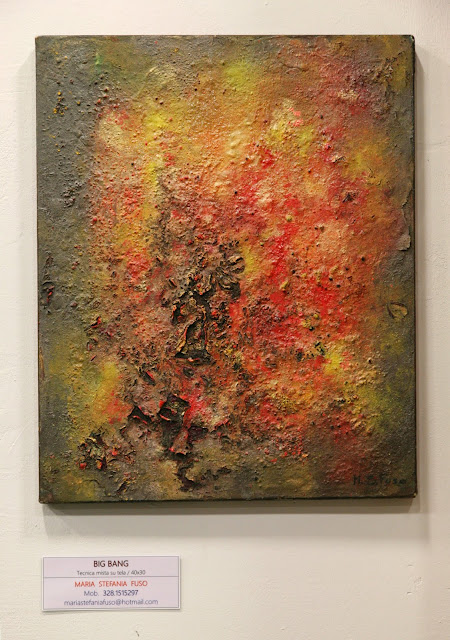
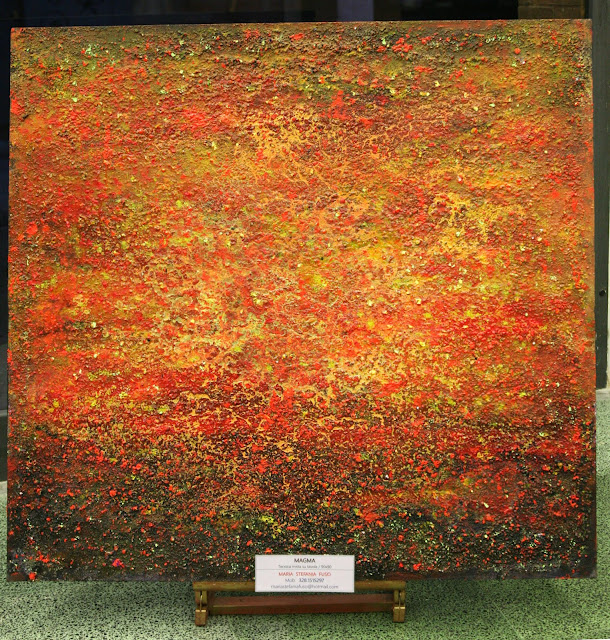
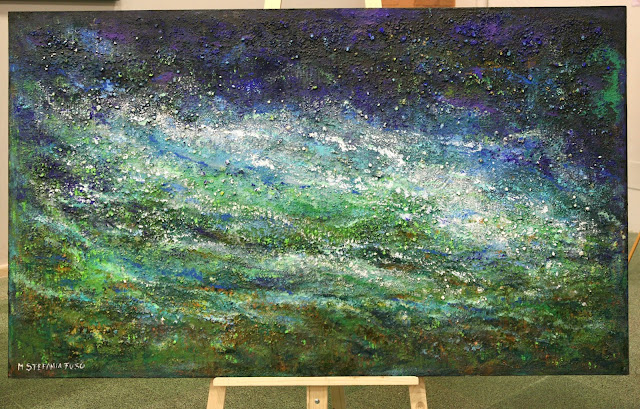

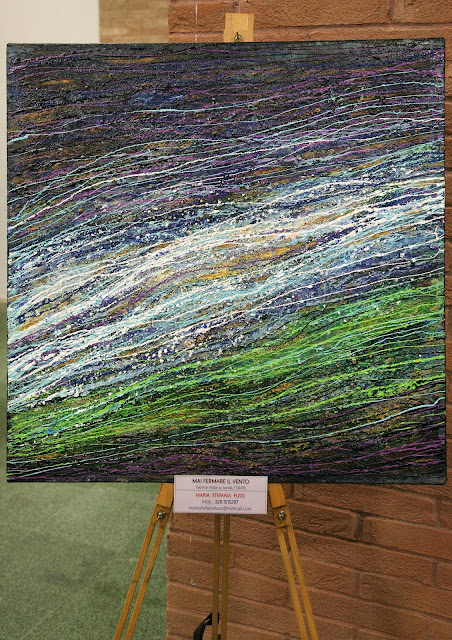


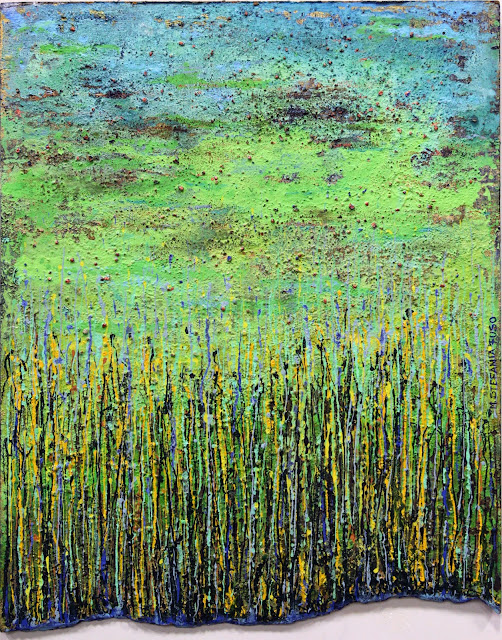

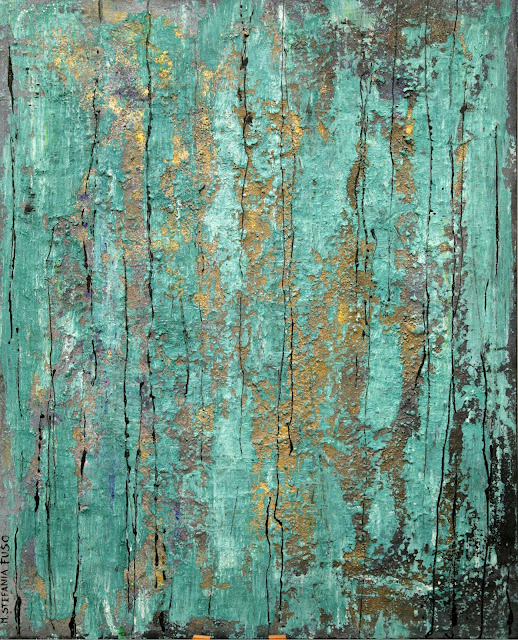



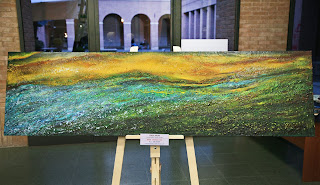

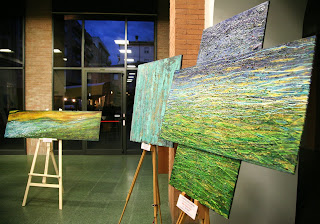
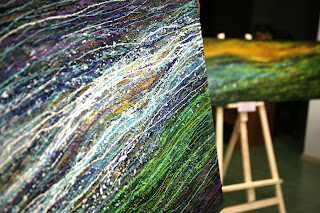




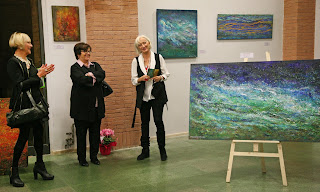




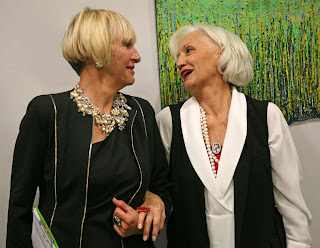
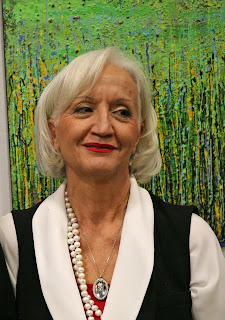
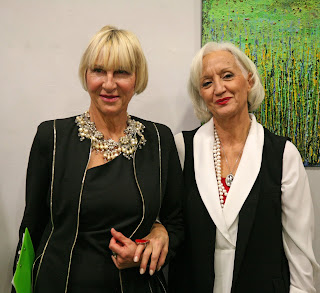
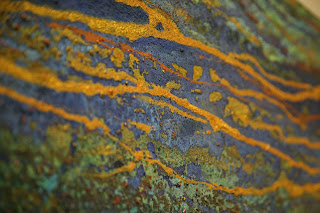
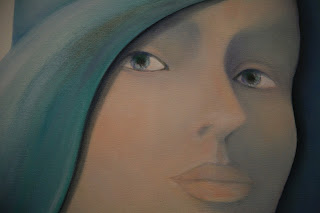
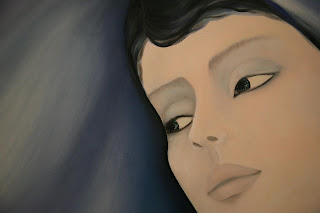



Nessun commento:
Posta un commento
Nota. Solo i membri di questo blog possono postare un commento.